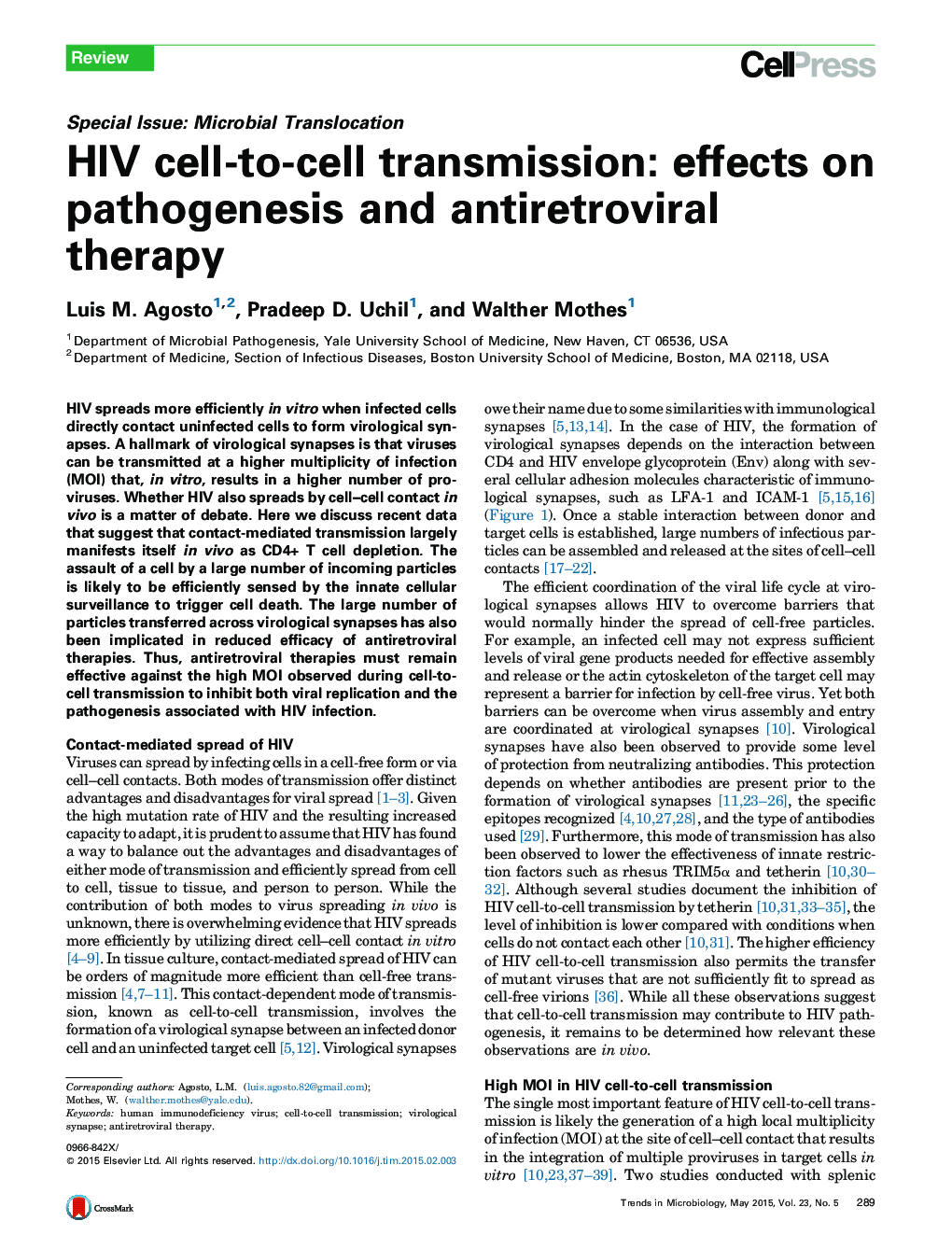| کد مقاله | کد نشریه | سال انتشار | مقاله انگلیسی | نسخه تمام متن |
|---|---|---|---|---|
| 3421861 | 1226691 | 2015 | 7 صفحه PDF | دانلود رایگان |
• Cell-to-cell transmission may contribute to pathogenesis seen in HIV-infected individuals.
• Effective antiretroviral therapy suppresses both cell-free and cell–cell transmission of HIV.
HIV spreads more efficiently in vitro when infected cells directly contact uninfected cells to form virological synapses. A hallmark of virological synapses is that viruses can be transmitted at a higher multiplicity of infection (MOI) that, in vitro, results in a higher number of proviruses. Whether HIV also spreads by cell–cell contact in vivo is a matter of debate. Here we discuss recent data that suggest that contact-mediated transmission largely manifests itself in vivo as CD4+ T cell depletion. The assault of a cell by a large number of incoming particles is likely to be efficiently sensed by the innate cellular surveillance to trigger cell death. The large number of particles transferred across virological synapses has also been implicated in reduced efficacy of antiretroviral therapies. Thus, antiretroviral therapies must remain effective against the high MOI observed during cell-to-cell transmission to inhibit both viral replication and the pathogenesis associated with HIV infection.
Journal: - Volume 23, Issue 5, May 2015, Pages 289–295
